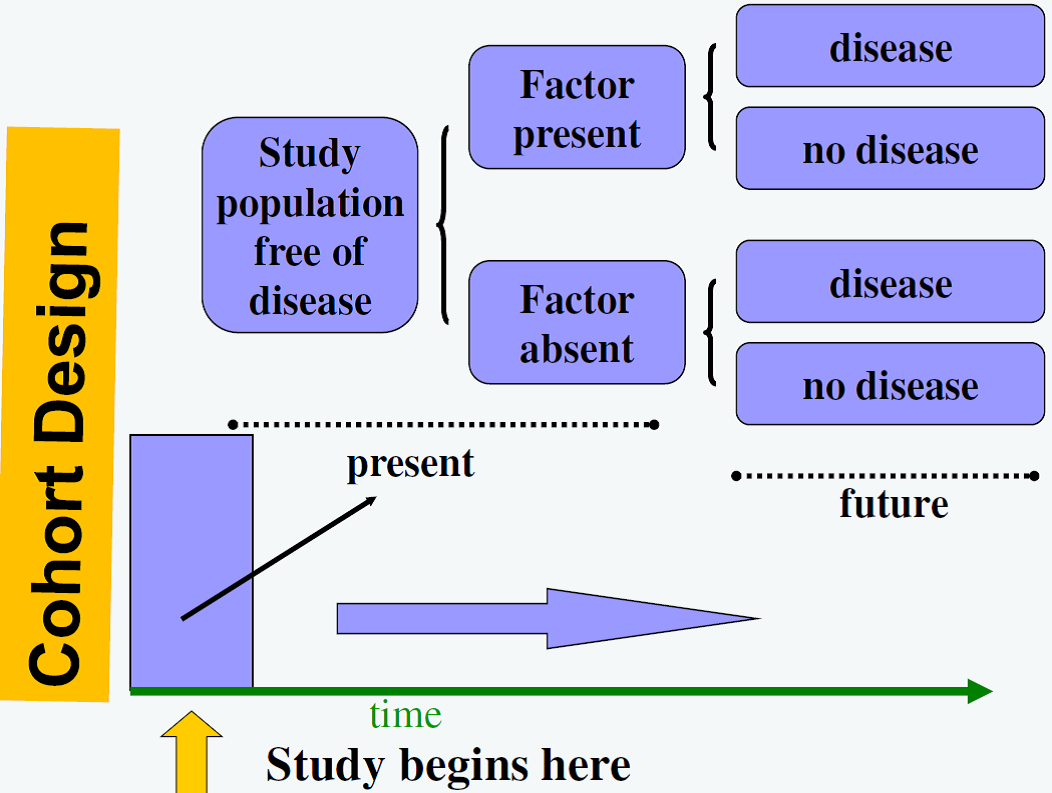Observational Study Designs: Cohort study
Cohort studies can provide the highest level of evidence, out of the observational studies, regarding the relationship between exposure and outcome. In this type of study the study sample is selected based on the exposure of interest and then moving forward temporally to evaluate the development of a pre-specified outcome. In cohort studies, because the sample is selected based on the exposure, and the outcome occurs at a later date, temporality of the exposure outcome relation is established. In another words, the cause precedes the effect. Cohort studies provide the highest level of evidence that can be obtained from observational data.
Figure 1. Cohort Design
Figure from: Niyonsenga, T. Foundations of Public Health Epidemiology (HLTH 5188). School of Population Health. University of South Australia.
Advantages
- Exposure is ascertained before the outcome (establishing temporal relationship)
- Subjects can be selected into the cohort before having the outcome of interest
- Can study several outcome for each exposure
- Incidence of outcome can be measured
Disadvantages
- Expensive (more so in prospective cohorts) and time-consuming
- Inefficient for rare diseases or diseases with long latency
- Loss to follow up (cohort attrition)
- Possible internal validity issues when using secondary data
- Changes in exposure and outcome definitions over the years can impact study
